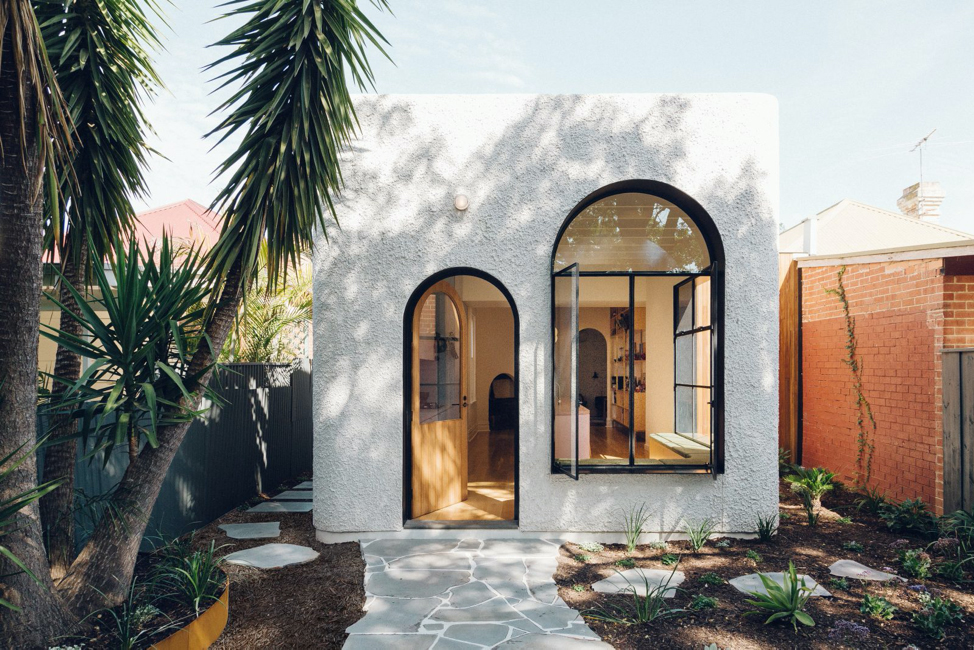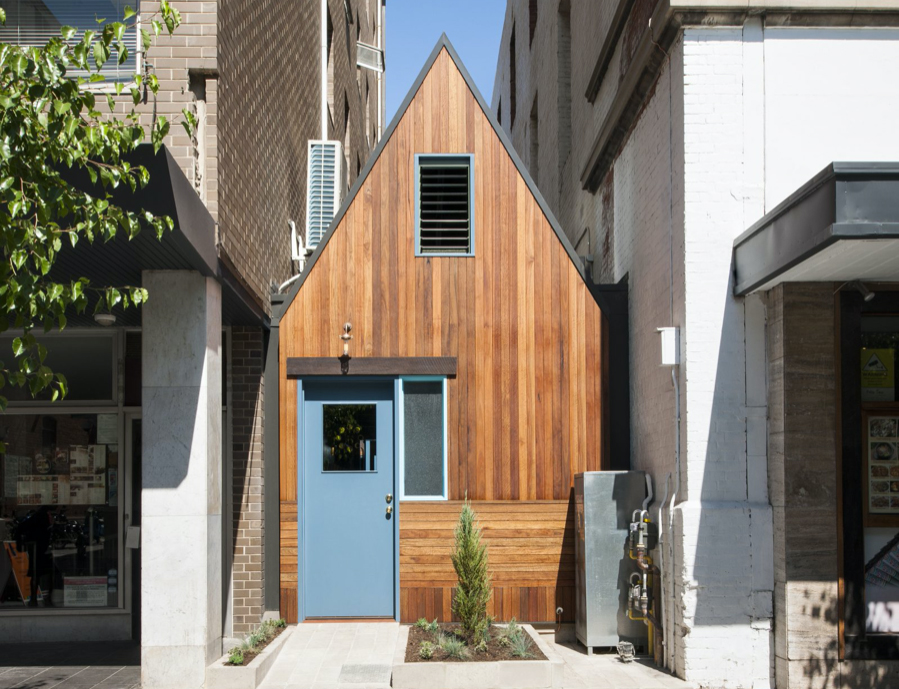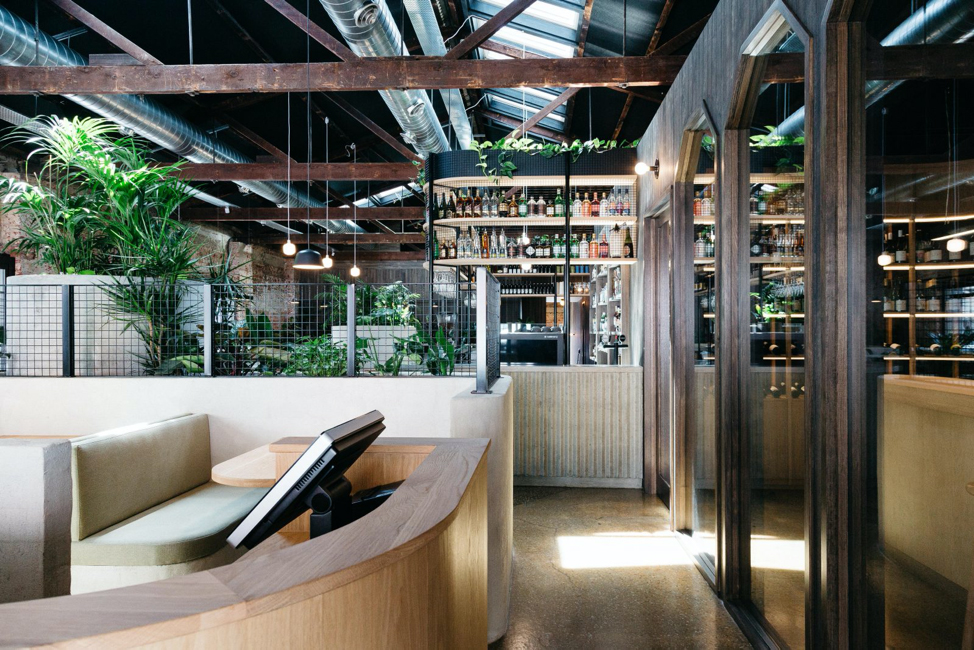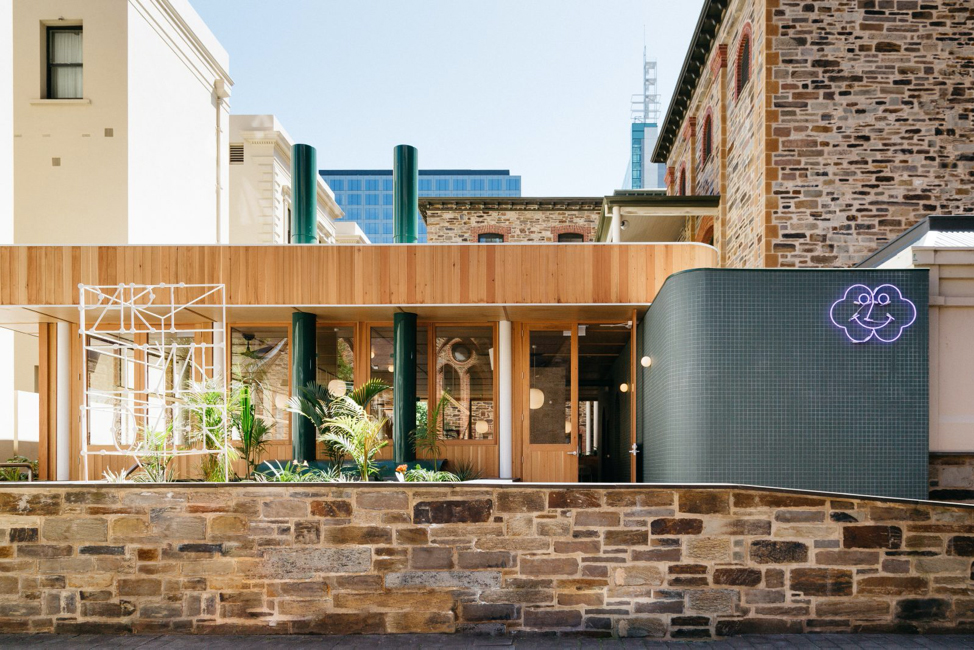30 November 2020

Matiya Marovich
Designer & Director of Sans-Arc Studio
Bachelor of Architectural Studies
Master of Architecture
At just 32-years-old, Director and Designer of Sans-Arc Studio, Matiya Marovich has built some of the most unique, and shared, spaces across the country in his short career so far, quickly becoming one the most recognisable and sought-after University of South Australia Architecture graduates.
Having always been drawn and attracted to making art – and growing up following his mother who worked in project management and construction around building sites – Matiya’s artistic abilities were sparked in a creative and practical way, leading him on a successful trajectory to building Sans-Arc.
A few years later he and his team have now built and designed a number of hotspots around the city, including Stem, Pink Moon Saloon, Gondola-Gondola, Whistle & Flute, Malt & Juniper, Recess, Part-Time Lover, each of the projects imbued with their signature sense of joy and fun.
This month Matiya shares with us his career journey after university and why he believes that good design brings warmth and joy to a community, connecting people, and contributing to the heartbeat and pulse of a city.
Congrats on everything Sans-Arc Studio has achieved so far! What did you set out to create and what made you branch out on your own to start the studio?
Cheers! Sans-Arc started out of frustration with my regular 9-5 Architecture job and pursuit of a faster, broader education for myself. I did not see good values and intentions in the work I was doing, and I could not justify to myself how I was making the world a better place.
I had one friend ask me to design a small shop re-fit for him, then that snowballed into a residential extension, Gondola-Gondola and Pink Moon Saloon. I started working on all of these on the side of my regular job, but then the workload gradually increased to full time and I realised I had properly started working for myself.

What challenges have you come across – or are still experiencing – while building Sans-Arc Studio and throughout your subsequent projects?
I think the most significant challenges are learning those skills that are not taught at University. I started working for myself with very little experience in the industry. We are not taught how to run a business, anything about marketing, managing clients and their expectations or good budget management.
These are significant portions of what you do when you run a practice and generally present the greatest challenges. The other big challenge is the creative element; working as a creative in a business environment can be difficult, you want to continue to create and have fun, but there are many hurdles and challenges that inhibit or make it harder to experience that creative freedom we enjoyed so much during university.
Did you ever imagine your career taking the path it has? What do you love about creating social spaces that you turned it into such a successful venture?
I did not have any expectations of where I was going to go with my career at the end of uni. I was so focussed on learning and my creative adventures that I had not really considered it. I guess those two drivers, along with my interest in environmental and social design has brought me to this place.
Social spaces are so central to a vibrant and interesting city. I worked in hospitality throughout university and this part-time work really connected me to Adelaide and its community more than anything else ever has. I met so many people and really felt the pulse of the city working in hospitality and subconsciously realised how important these spaces are.
Following this, I have found it interesting to work with volumes of people and experiment with how design can influence their experience of a space or help to create beautiful moments. I believe that good design brings warmth and joy to a community, connecting people and contributes massively to the heartbeat and pulse of a city.

There’s a pronounced sense of fun, colour and joy in so many of your projects. Where do you find your inspiration for your designs? How do you balance your vision with what the client wants as well?
We start with the client’s brief, but the aim is always to elevate it. We want to create a space that is unique and absolutely enhances the experience of occupying the space – whether that is a dining experience or someone’s home.
I think it is amazing that we can design and model things in 3D and after a bit of work, they are realised in the real world. Why would we want the world to be boring? Shouldn’t the world be fun, beautiful, and engaging? The inspiration comes from everywhere, we try to avoid Pinterest boards (though we welcome our clients providing them) and cut-copy references. We would rather try and distil down the brief to figure out what the essence of the project is, then build from there, be rational, but make sculpture too.
Outside of being inspired by historical design movements, we draw from vernacular architecture, product, object and industrial design, and art, sculpture and installation design.
Your work is very popular on social media – particularly Pink Moon Saloon and more recently your plaster fun house has gone viral with hundreds of tags and reposts – what do you think it is about your designs (and those iconic plaster fun house windows) that has resonated with people? Have you found any value in this kind of recognition?
Simply, I think it is because these projects are unique. In the case of Pink Moon and Plaster Fun House the designs are super-playful, romantic and they both have a singular eye-catching image that summarises an idea in 1080 x 1350 pixels. The reposts, tags, and online media has been great for our practice. The value of print as we knew it is decreasing, so having so many people familiar with our work and Sans-Arc reaching such a large audience via the digital realm is helpful for generating more work.

You’ve been a major part of revitalising Adelaide’s hospitality and nightlife – creating hotspots like Stem, Pink Moon Saloon, Gondola-Gondola, Whistle & Flute, Malt & Juniper, Recess, Part-Time Lover – has this ever been a conscious goal for Sans-Arc Studio?
After a couple of years going alone, I wanted to diversify the type of work I was doing and look to expand outside of Adelaide. I realised that most of the work I was doing was riding a boom in the hospitality industry after the release of the Small Venue License by the SA Government, so I saw a ceiling on this type of work.
I also missed the studio atmosphere of working with someone, bouncing ideas off each other, and working collaboratively. Sam’s experience post-uni is largely in residential, and we’ve shifter our practice so we are doing more work in that area than hospitality these days – though this was intentional, the shift has been encouraged by COVID-19. Having an office in Melbourne allows us both to work between the two cities and undertake work on the east coast; we currently have work in SA, VIC, ACT and QLD.
Social spaces are exciting and interesting for us. It has been an honour to help revitalise Adelaide’s hospitality scene, working in the industry gave me a lot and I appreciate that, so it is nice to contribute and give back in some way. It was not the initial goal for Sans-Arc, but as more and more projects came in, we have always asked ourselves questions like; What is missing? What kind of venue would I like to go to? What is logical for this location and brief, what is it that this place, space or that these people need? We want to better the world and the cities and spaces we work in, this is key and central to every project we undertake.
Do you have a standout project you’ve worked on that you’re particularly proud of?
For me, there are two; Pink Moon Saloon and Part Time Lover. Both of these are adaptive re-use/new build hospitality projects. Both were amazing opportunities on great sites within the city. They embrace passive design principles and are truly beautiful and unique spaces. Four years apart, both took a lot of work, and I learnt a lot throughout the process of delivering them.
Do yourself a favour and have a look through the rest of Sans Arc Studio’s portfolio here.



